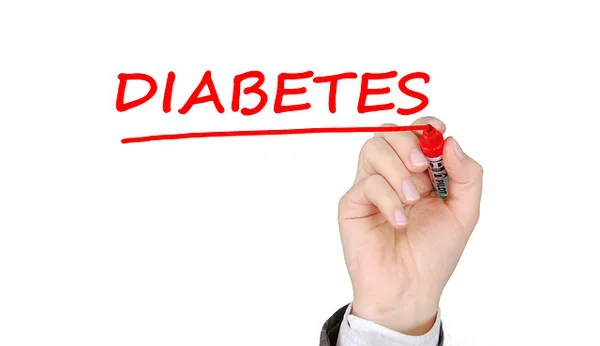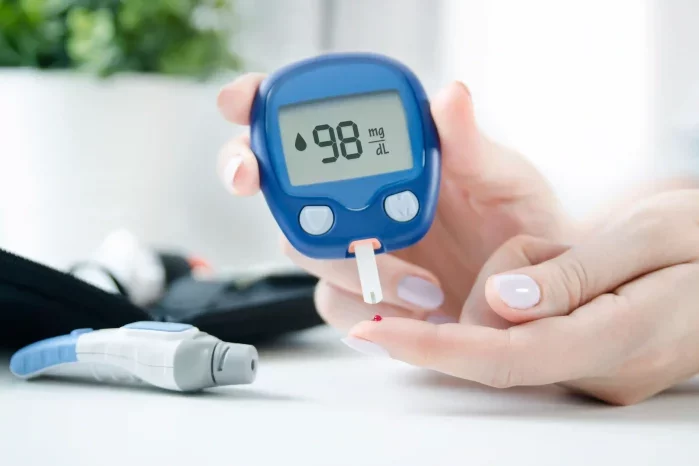Diabetes is a chronic health condition characterized by elevated blood glucose levels resulting from the body’s inability to produce or effectively use insulin. There are several types of diabetes, each with distinct causes, risk factors, and management strategies. Among these, type 2 diabetes is the most common, affecting millions of people worldwide. This article delves into the prevalence, causes, risk factors, symptoms, complications, and management of type 2 diabetes, highlighting why it is the most widespread form of diabetes.
Understanding Diabetes Mellitus
Diabetes mellitus is classified into three main types:
Type 1 Diabetes: An autoimmune condition where the immune system attacks the insulin-producing beta cells in the pancreas, leading to little or no insulin production. It usually develops in childhood or adolescence but can occur at any age.
Type 2 Diabetes: A condition where the body becomes resistant to insulin or doesn’t produce enough insulin to maintain normal blood glucose levels. It typically develops in adults over 45 but is increasingly seen in younger populations due to rising obesity rates and sedentary lifestyles.
Gestational Diabetes: A form of diabetes that occurs during pregnancy and usually resolves after childbirth. Women who experience gestational diabetes are at higher risk of developing type 2 diabetes later in life.
There are also other specific types of diabetes, such as monogenic diabetes and secondary diabetes, but these are less common.
Prevalence of Type 2 Diabetes
Type 2 diabetes accounts for approximately 90-95% of all diabetes cases globally. According to the International Diabetes Federation (IDF), around 537 million adults aged 20-79 years were living with diabetes in 2021, with projections indicating this number could rise to 643 million by 2030 and 783 million by 2045. The vast majority of these cases are type 2 diabetes.
The prevalence of type 2 diabetes varies by region, with the highest rates observed in low- and middle-income countries, where rapid urbanization, lifestyle changes, and increased life expectancy contribute to rising incidence rates.
Causes and Risk Factors of Type 2 Diabetes
The development of type 2 diabetes involves a combination of genetic, environmental, and lifestyle factors. Key risk factors include:
Genetic Predisposition
Family History: Having a parent or sibling with type 2 diabetes increases the risk.
Ethnicity: Certain ethnic groups, such as African Americans, Hispanic/Latino Americans, Native Americans, Asian Americans, and Pacific Islanders, have higher rates of type 2 diabetes.
Lifestyle Factors
Obesity: Excess body weight, particularly abdominal obesity, is a significant risk factor for insulin resistance and type 2 diabetes.
Physical Inactivity: A sedentary lifestyle contributes to weight gain and insulin resistance.
Unhealthy Diet: Diets high in processed foods, sugary beverages, and saturated fats increase the risk of developing type 2 diabetes.
Other Risk Factors
Age: The risk of type 2 diabetes increases with age, particularly after 45.
History of Gestational Diabetes: Women who develop diabetes during pregnancy are at a higher risk of type 2 diabetes.
Polycystic Ovary Syndrome (PCOS): PCOS is associated with insulin resistance and an increased risk of type 2 diabetes.
Hypertension and Dyslipidemia: High blood pressure and abnormal cholesterol levels are linked to an increased risk of type 2 diabetes.
Pathophysiology of Type 2 Diabetes
Type 2 diabetes is characterized by two main defects:
Insulin Resistance
In type 2 diabetes, the body’s cells become resistant to the effects of insulin, a hormone that helps glucose enter cells to be used for energy. As a result, more insulin is needed to help glucose enter cells.
Beta Cell Dysfunction
The pancreas compensates for insulin resistance by producing more insulin. Over time, the beta cells in the pancreas become impaired and cannot keep up with the increased demand, leading to insufficient insulin production and elevated blood glucose levels.
Symptoms of Type 2 Diabetes
The symptoms of type 2 diabetes often develop gradually and can be mild, making them easy to overlook. Common symptoms include:
- Increased thirst and frequent urination
- Unexplained weight loss
- Fatigue and weakness
- Blurred vision
- Slow-healing sores or frequent infections
- Tingling or numbness in hands or feet
Complications of Type 2 Diabetes
Without proper management, type 2 diabetes can lead to a range of serious health complications:
Microvascular Complications
Diabetic Retinopathy: Damage to the blood vessels in the retina can lead to vision loss and blindness.
Diabetic Nephropathy: Kidney damage resulting from diabetes can progress to end-stage renal disease (ESRD), requiring dialysis or kidney transplantation.
Diabetic Neuropathy: Nerve damage can cause pain, tingling, and loss of sensation, particularly in the extremities. Severe cases can lead to amputation.
Macrovascular Complications
Cardiovascular Disease: Diabetes significantly increases the risk of heart disease, stroke, and atherosclerosis (hardening of the arteries).
Peripheral Arterial Disease: Reduced blood flow to the limbs can lead to pain, infections, and ulcers.
Other Complications
Infections: People with diabetes are more susceptible to infections, including skin infections, urinary tract infections, and oral infections.
Hearing Impairment: Diabetes is associated with an increased risk of hearing loss.
Alzheimer’s Disease: Type 2 diabetes may increase the risk of developing Alzheimer’s disease and other types of dementia.
Management of Type 2 Diabetes
Effective management of type 2 diabetes involves a combination of lifestyle modifications, medication, and regular monitoring to maintain blood glucose levels within a target range and prevent complications.
Lifestyle Modifications
Healthy Eating: A balanced diet rich in whole grains, fruits, vegetables, lean proteins, and healthy fats helps control blood sugar levels and promote overall health. Limiting refined sugars, processed foods, and saturated fats is also important.
Physical Activity: Regular exercise improves insulin sensitivity, aids in weight management, and reduces the risk of cardiovascular disease. Aim for at least 150 minutes of moderate-intensity aerobic activity per week, combined with strength training exercises.
Weight Management: Achieving and maintaining a healthy weight can significantly improve blood sugar control and reduce the need for medication.
Smoking Cessation: Quitting smoking lowers the risk of cardiovascular disease and improves overall health.
Medications
Metformin: Often the first-line medication for type 2 diabetes, metformin helps lower blood glucose levels by reducing glucose production in the liver and improving insulin sensitivity.
Sulfonylureas: These medications stimulate the pancreas to produce more insulin.
DPP-4 Inhibitors: These drugs help increase insulin production and decrease glucose production.
GLP-1 Receptor Agonists: These medications increase insulin secretion, reduce glucagon secretion, and slow gastric emptying, which helps lower blood sugar levels.
SGLT2 Inhibitors: These drugs help the kidneys remove excess glucose from the blood through urine.
Insulin Therapy: Some individuals with type 2 diabetes may require insulin injections, particularly if other medications do not adequately control blood sugar levels.
Regular Monitoring
Self-Monitoring of Blood Glucose (SMBG): Regular blood glucose testing helps patients track their blood sugar levels and make informed decisions about diet, exercise, and medication.
HbA1c Testing: This test measures average blood glucose levels over the past two to three months and helps assess long-term glucose control. The target HbA1c level for most adults with diabetes is below 7%.
Education and Support
Diabetes Education Programs: Structured education programs provide patients with the knowledge and skills needed to manage their diabetes effectively.
Support Groups: Joining a support group can provide emotional support and practical advice from others living with diabetes.
Prevention of Type 2 Diabetes
Preventing type 2 diabetes involves addressing modifiable risk factors through lifestyle changes:
Healthy Eating: A balanced diet with a focus on whole foods and reduced intake of processed foods and sugars can lower the risk of developing type 2 diabetes.
Regular Physical Activity: Engaging in regular exercise helps maintain a healthy weight, improves insulin sensitivity, and reduces the risk of type 2 diabetes.
Weight Management: Achieving and maintaining a healthy weight can prevent or delay the onset of type 2 diabetes in individuals at high risk.
Regular Health Check-Ups: Regular screenings for blood glucose levels and other risk factors can help identify individuals at risk for type 2 diabetes and provide opportunities for early intervention.
See also: What Insulin Is Similar To Novolog
Conclusion
Type 2 diabetes is the most common form of diabetes, accounting for the vast majority of cases worldwide. Its prevalence continues to rise, driven by factors such as obesity, sedentary lifestyles, and aging populations. Understanding the causes, risk factors, symptoms, complications, and management strategies for type 2 diabetes is crucial for healthcare professionals and patients alike.
Effective management of type 2 diabetes involves a comprehensive approach that includes lifestyle modifications, medication, regular monitoring, and patient education. By addressing modifiable risk factors and promoting healthy behaviors, it is possible to prevent or delay the onset of type 2 diabetes and improve outcomes for those living with the condition.
Related topics:


























